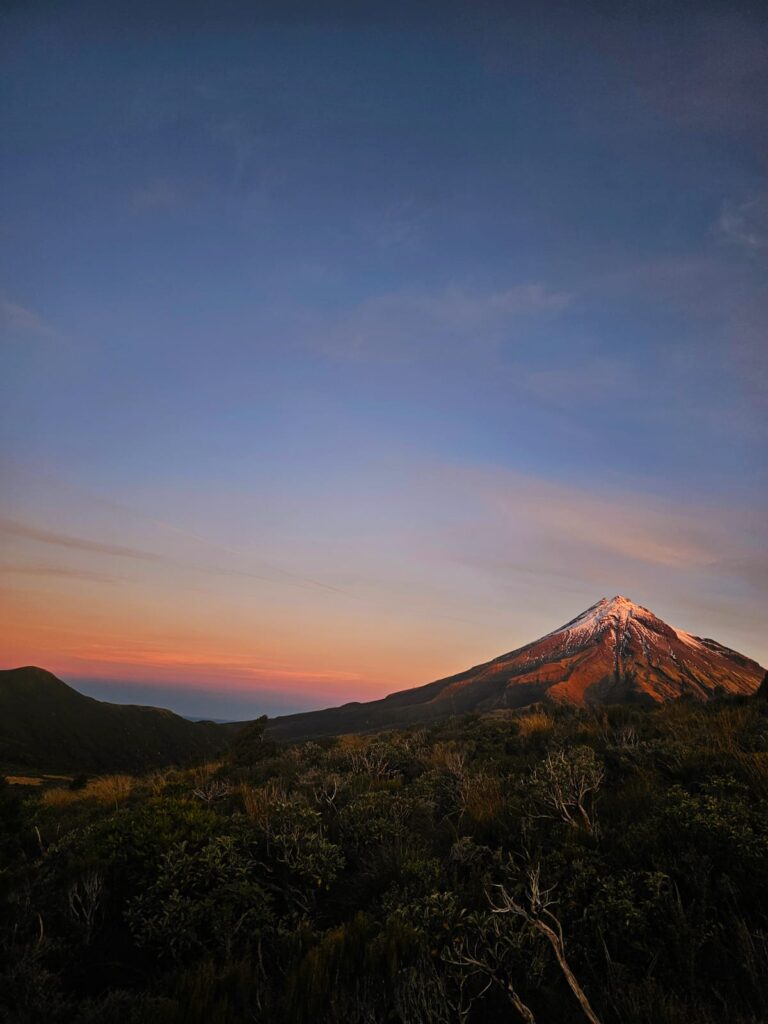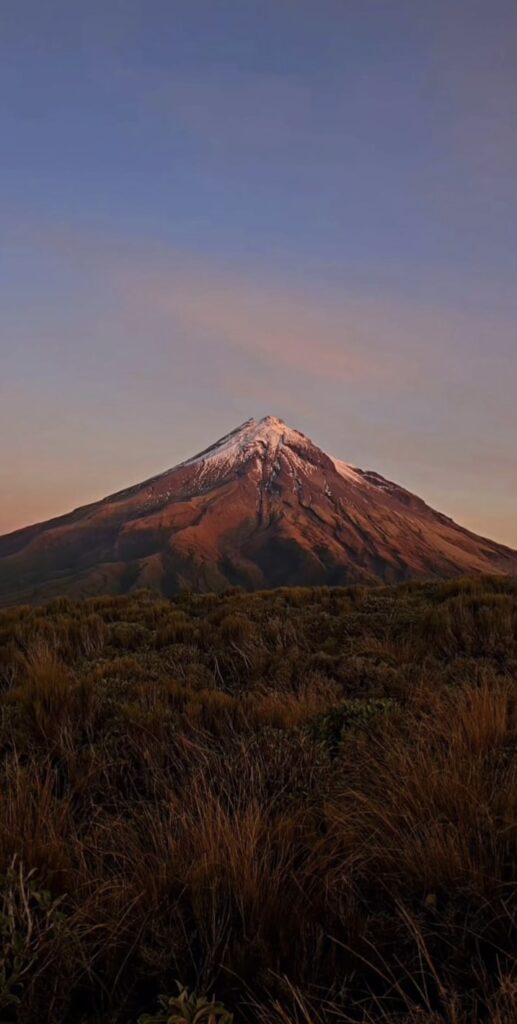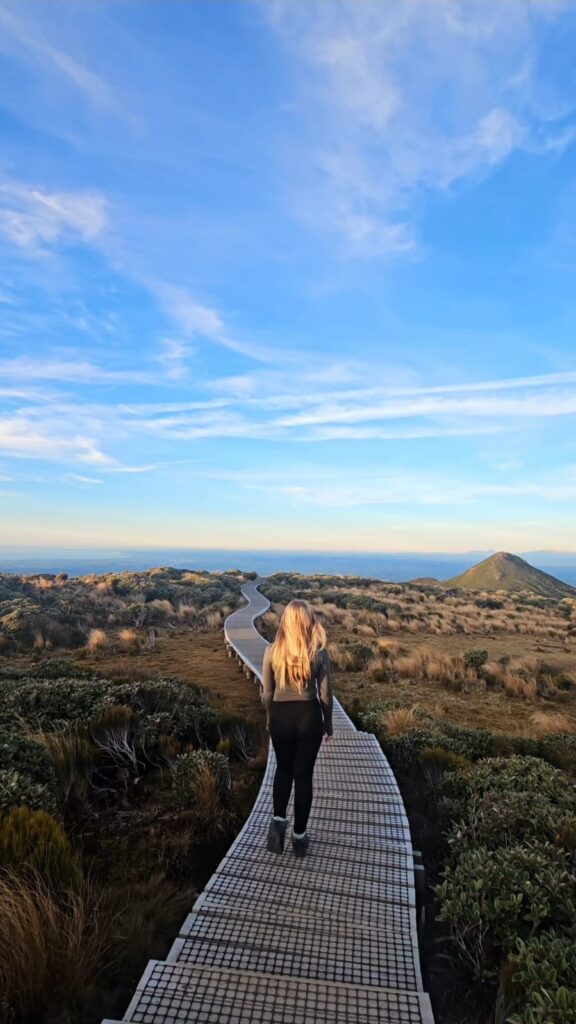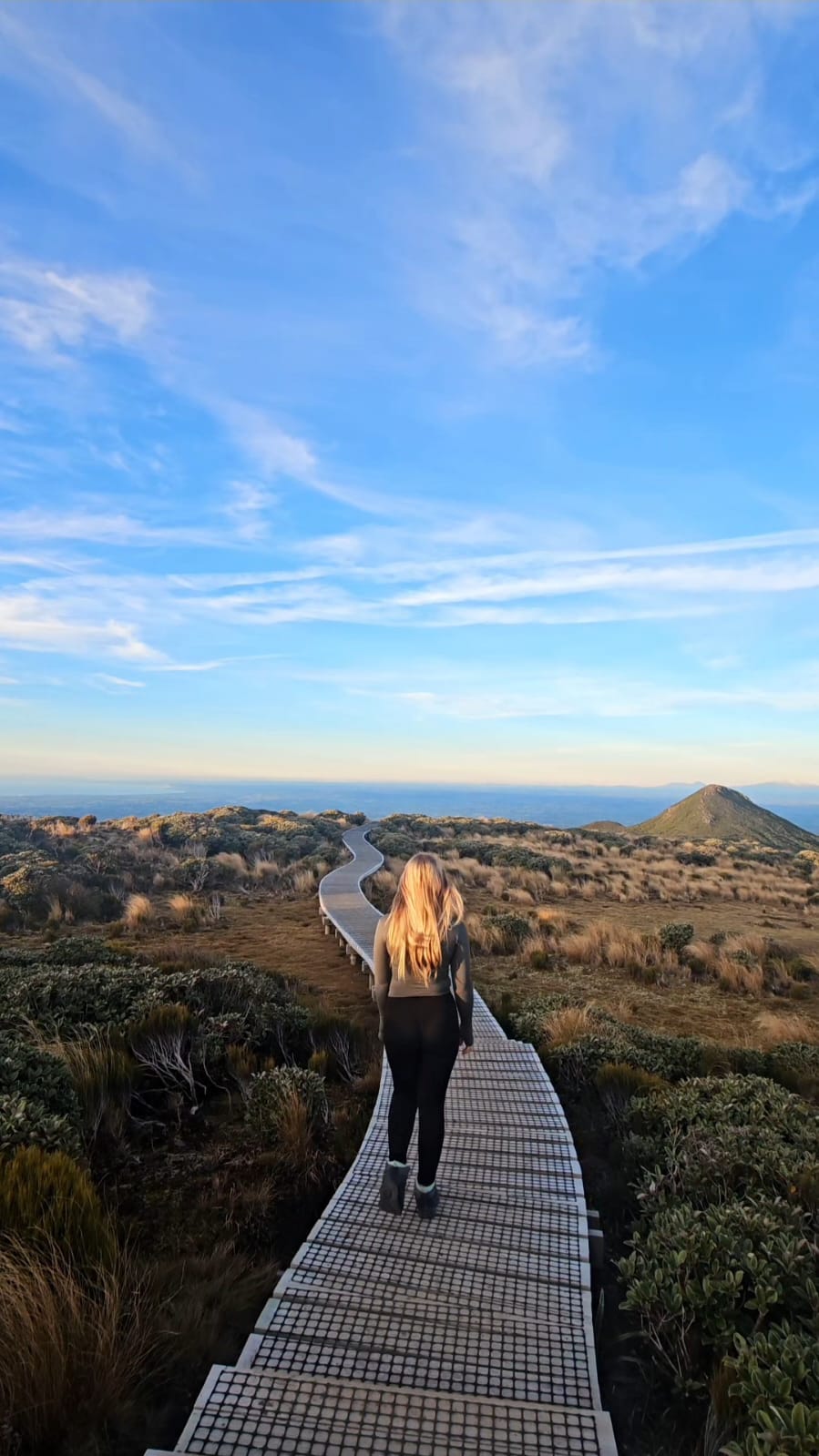You may be thinking, why is this week’s blog dedicated to a single mountain when all previous weeks have covered entire towns or national parks? Well, for one, the experience of Mount Taranaki does not just happen standing at its feet. Mount Taranaki, due to the topographic irregularity of being surrounded by hundreds of kilometres of flat land, is visible from over two hours by road away. Therefore, the experience of Mount Taranaki arguably covers a much larger land area than even Queenstown or Arthur’s Pass.
While colloquially referred to as Mount Taranaki, it is actually a dormant stratovolcano. Known for its perfect conical shape, Mount Taranaki is exactly what the mind’s eye pictures when you think of a volcano. Mount Taranaki even stands in for Mount Fuji in the blockbuster The Last Samurai. It belongs to the wider Egmont National Park, which itself is an almost perfect circle in area, with Mt. Taranaki sitting at its centre. With a snow-capped pointed peak and a conical, craggy face, rooted by sub-tropical forest at its base, the volcano is every unimaginative year six’s geography project made real.
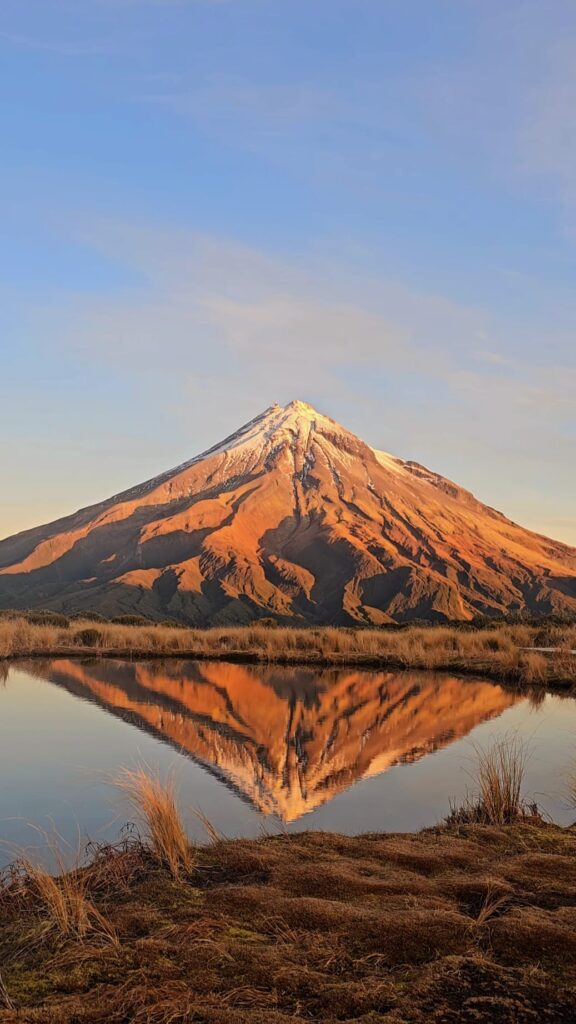
Mount Taranaki is surrounded by lush native forest and farmland, which is in itself beautiful to hike through. I had never quite seen a place that encapsulated the term green rolling hills until I saw the wider Taranaki area. It may seem a cliché, but the grass quite literally looks greener in New Zealand. We sampled a couple of different bush walks while camping in Egmont National Park, including Wilkies Pools and Dawson Falls, which displayed beautiful native bush, volcanic rock, and dramatic water formations.
But better still, Mount Taranaki is home to one of our favourite hikes in all of New Zealand. This is the Mangorei track to Pouakai tarn. It is a two-hour one-way climb through native forest, all of which is paved by boardwalk for the protection of delicate flora and fauna. The subtropical forest itself is a magical view, and your hike is unfailingly accompanied by birdsong. New Zealand has hundreds of fascinating tropical birds, and they are abundant in the wild, which keeps you occupied enough to forget you are climbing steps for two hours.
When you finally emerge out of the tree line, there is a saddle that flanks the volcano where you find a small tarn. When there is little wind, this tarn projects a mirror image of the volcano in a beautifully symmetrical reflection. It is a hike braved by the artistic and the aesthete. We were fortunate enough to hike it on a beautifully clear day, and the view was enough to make a photographer out of an amateur.
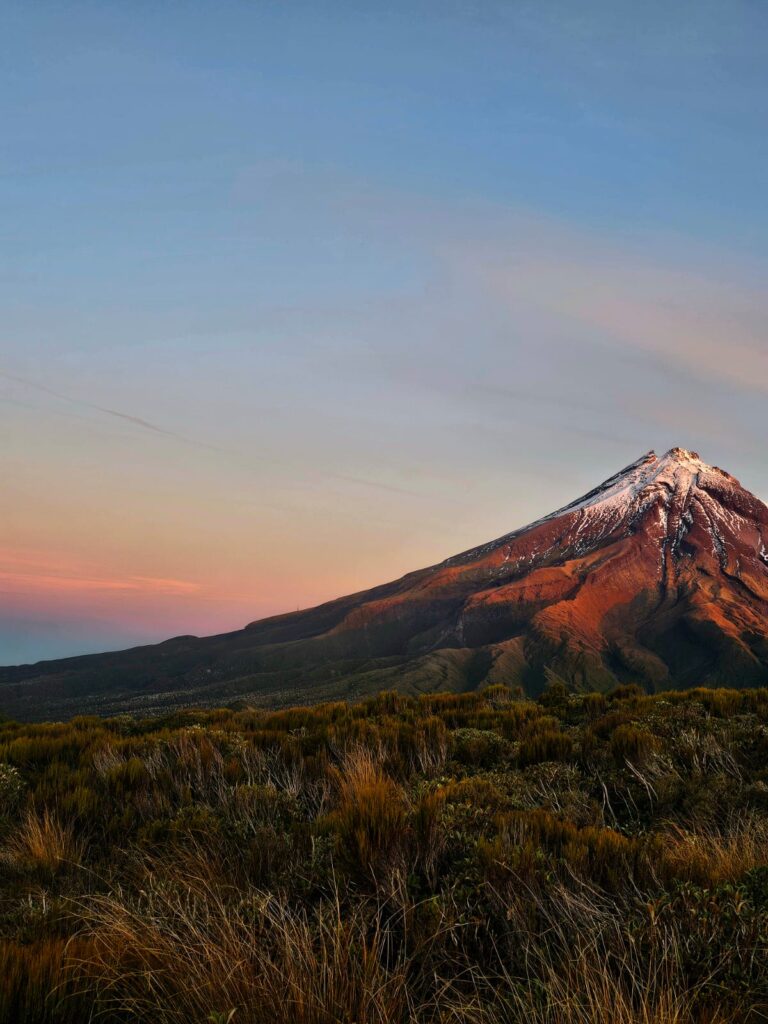
I had the inspired idea to hike to Pouakai Tarn for the evening golden hour, which made for a grumpy hiking partner when we had to retreat two hours back in the pitch black. But I do not regret the decision whatsoever. When we first arrived, the sun was illuminating the bush that framed the tarn a beautiful gold, and the volcano itself was lit up in warmth. Then as golden hour progressed, the gold turned into a deep amber, and then a reddish bronze hue. It was an indescribable experience watching the light change on the volcano. We were finally graced by a beautiful sunset, with pink and pastel yellow skies encircling the peak. It was the perfect evening.

We spent the next day walking around the base of Mount Taranaki to Dawson Falls, a classically beautiful waterfall carved into the side of the volcano. But the most remarkable part of the hike, which we completed in the mid-afternoon, was witnessing the immense conical shadow of the volcano spanning the valley beyond. The path spans the perimeter of the volcano at a low altitude, so the towering shadow was a surreal reminder that we were really traversing a dormant volcano.
Mount Taranaki’s network hosts some of the most accessible walking trails in New Zealand. We have hiked much harder terrain in the South Island for less of a spectacular view. It is low effort, high reward made manifest. It is not a long slog that has you repeating over and over, ‘I can do this; it will be worth it when I arrive at the view.’ There are no endless switchbacks through farmers fields, no rivers to wade through (which is not uncommon on the New Zealand hike), or scrambling up vertical cliff faces (also not unheard of). Hikes on Mount Taranaki can be enjoyed from start to finish and are beautiful all the way through. Even for the non-ramblers, just driving anywhere near Mount Taranaki at sunrise or sunset is an incredible experience. Around Mount Taranaki there is beauty to be found for everyone, no searching required.
